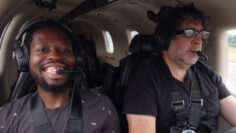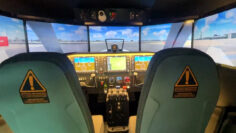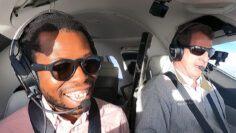How Long Does It Take to Become a Pilot?

Whether it’s the thrill of lift-off or the joy of seeing the world from a different perspective, many dream of becoming pilots. While this exciting career path is filled with high-flying adventure, it’s also a commitment that demands time, dedication, and a well-defined road map. So, buckle up as we navigate the runway to becoming a pilot.
Laying the Groundwork: Education and Training
The journey to the cockpit starts with an educational foundation. Most pilot training programs will require at least a high school diploma or equivalent. Why? Because the basics of math and physics, which are taught in high school, form the underpinnings of aviation theory.

For those who wish to dig deeper into aviation knowledge before getting their feet off the ground, there are many avenues. You could attend a flight school, join an aviation academy, or even enroll in a university program specializing in aviation. These advanced educational options offer a more in-depth understanding of aviation theory and provide substantial practical training, setting the stage for a smoother take-off into your flying career.
The core of pilot training lies in a mix of theoretical knowledge and practical skills. You’ll be learning the A to Z of aviation – from regulations and aircraft systems to navigation techniques and weather interpretations. Additionally, a hefty portion of your training will be practical, where you’ll learn and master flight maneuvers. After all, there’s no substitute for hands-on experience when it comes to flying.
Collecting Your Air Miles: Flight Hours and Experience
Flight hours are the bread and butter of your pilot training. They give you the chance to take theory from the classroom to the sky, transforming textbook knowledge into real-life skills. These hours help in building confidence, honing your aircraft handling skills, sharpening your decision-making abilities, and enhancing your situational awareness.
There are different ‘flavors’ of flight hours to be clocked in. You’ll be piloting solo, flying dual with an instructor, navigating cross-country flights, and mastering instrument flying. Each of these experiences shapes you into a well-rounded pilot, ready for any challenge in the sky.
The magic number of flight hours required will depend on the pilot license you’re aiming for. Private Pilot Licenses (PPL), Commercial Pilot Licenses (CPL), and Airline Transport Pilot Licenses (ATPL) each have their specific requirements. Make sure to research these thoroughly and plan your training accordingly.
Getting the Green Light: Certification and Licensing
Finally, you can’t officially call yourself a pilot until you’ve got the certificate to prove it. The certification process validates that you’ve met all the prerequisites set by aviation authorities, including passing medical assessments, written exams, practical flight tests, and even oral interviews. This comprehensive evaluation ensures pilots are up to the safety and competency standards required.
There are several levels of pilot licenses, from a Private Pilot License for flying solo or with family and friends, to a Commercial Pilot License for those looking to make a career in aviation. If you’re aiming high and want to captain a commercial airliner, you’ll need an Airline Transport Pilot License. Each license comes with its own privileges and limitations, so be sure to pick the one that best aligns with your aviation goals.
And the learning doesn’t stop there! Pilots can choose to enhance their qualifications with additional certifications and endorsements. From instrument ratings to multi-engine ratings, and even becoming a flight instructor, there’s always a new horizon to chase in the world of aviation.
FAQs
- How long does it take to get a private pilot license? It’s hard to pin down an exact timeline as it depends on your training pace, individual progress, and even weather conditions. However, most people can achieve this milestone within a few months. Expect to clock in around 40 to 60 hours of flight time, with at least 20 hours of that being flight instruction and 10 hours of solo flight.
- What is the duration of a commercial pilot training program? Similar to obtaining a PPL, the time it takes to get a CPL depends on the pace of your training and dedication. On average, expect to dedicate about 6 to 12 months to a commercial pilot training program. This will typically involve classroom instruction, flight simulator training, and logging flight hours to meet the requirements set by aviation authorities.
- How long does it take to become an airline pilot? If your ultimate goal is to pilot commercial airliners, know that this path requires a higher level of experience and qualifications. After obtaining a CPL, most aspiring airline pilots build flight experience in roles like flight instructors, charter pilots, or corporate pilots. The timeline to become an airline pilot can be several years due to the high demand for flight hours and extensive experience.
Join the Conversation
Becoming a pilot is an amazing journey, and we’d love to hear your experiences and thoughts. Are you already soaring the skies, or just dreaming of it? Share your insights in the comments below and help others navigate their way.
Don’t forget to share this guide with any aspiring aviators you know. And if you’re eager to learn more, check out our recent piece, “Flight Planning Hacks: Simplifying Navigation for Pilots,” for insights into optimizing flight planning and enhancing your navigation skills.
Concluding Thoughts
As you can see, the journey to becoming a pilot isn’t a weekend jaunt—it requires serious commitment, continuous learning, and a deep passion for aviation. Whether it’s meeting education requirements, logging flight hours, or obtaining the necessary certifications, every step toward becoming a pilot is both challenging and rewarding. Remember, patience and perseverance are your copilots in this journey. So keep your passion for flying high, and soon enough, you’ll find yourself in the captain’s seat, ready to conquer the skies.







